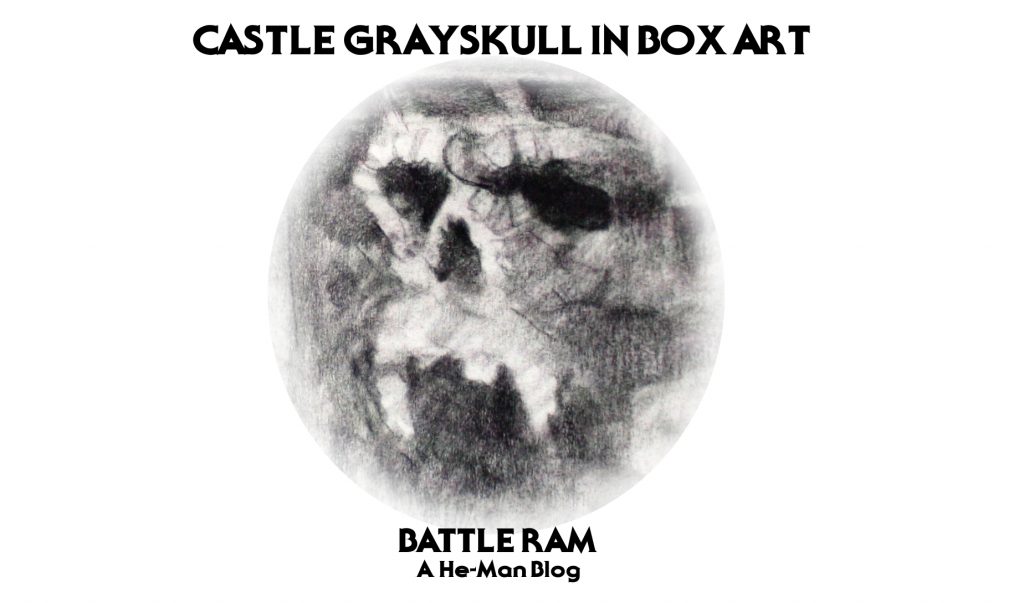
As a kind of sequel to my post about Castle Grayskull in the minicomics, I’d like to turn to Castle Grayskull as it was depicted in the box art. It shows up less frequently than you might expect.
Although Rudy Obrero painted the box art for the first year and a half of the Masters of the Universe toyline, most of the pieces of box art that feature Castle Grayskull were painted by him. That makes sense, as the the time to most heavily cross-promote the playset would be around the time it was released.
Battle Cat (1982)
Rudy Obrero’s first piece for MOTU was actually for the Battle Cat packaging. Castle Grayskull really isn’t the star of this illustration. Most of the detail is saved for Battle Cat and He-Man, while the castle is half-shrouded in mist in the background.
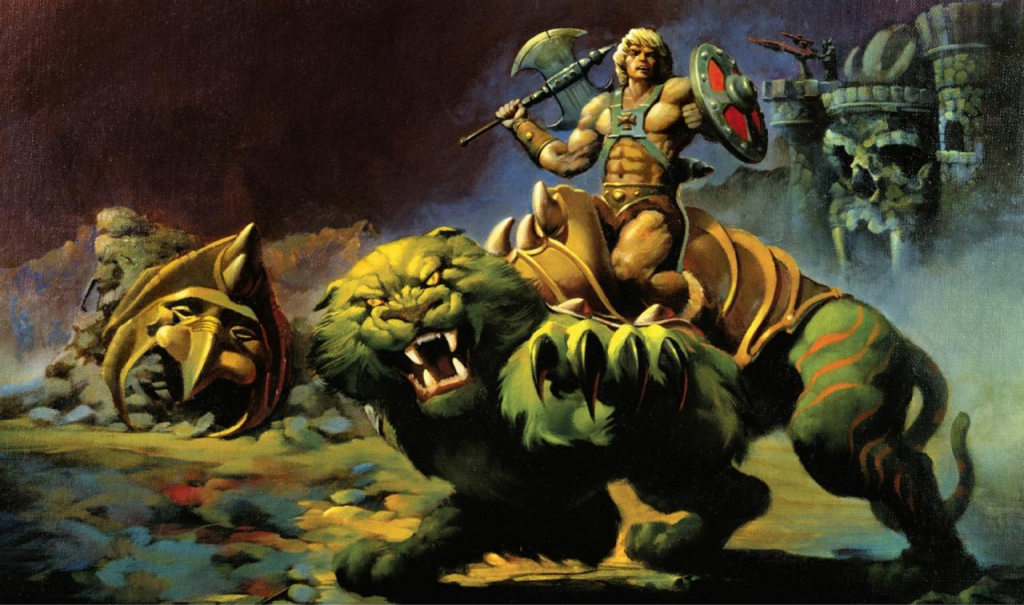
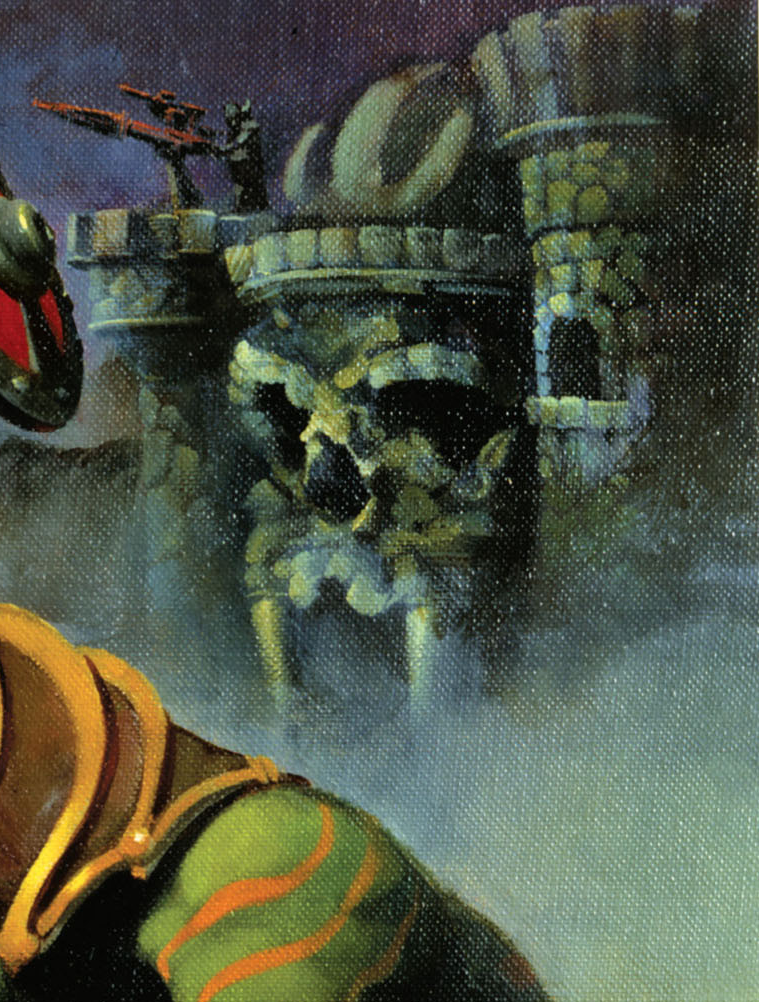
Most of Rudy’s depictions of the Castle generally follow the design of the playset However, this one is kind of a transitional piece, in between the prototype and the final toy design. It has the rounded teeth, full towers (these were shortened on the production playset) and red laser cannon of the prototype, but has lost the prototype’s tower ledge and “pawn” piece on the helmet. The “pawn” was actually present in Rudy’s original charcoal drawing (below). That indicates that some of the changes made to the castle happened while Rudy was still illustrating this piece.
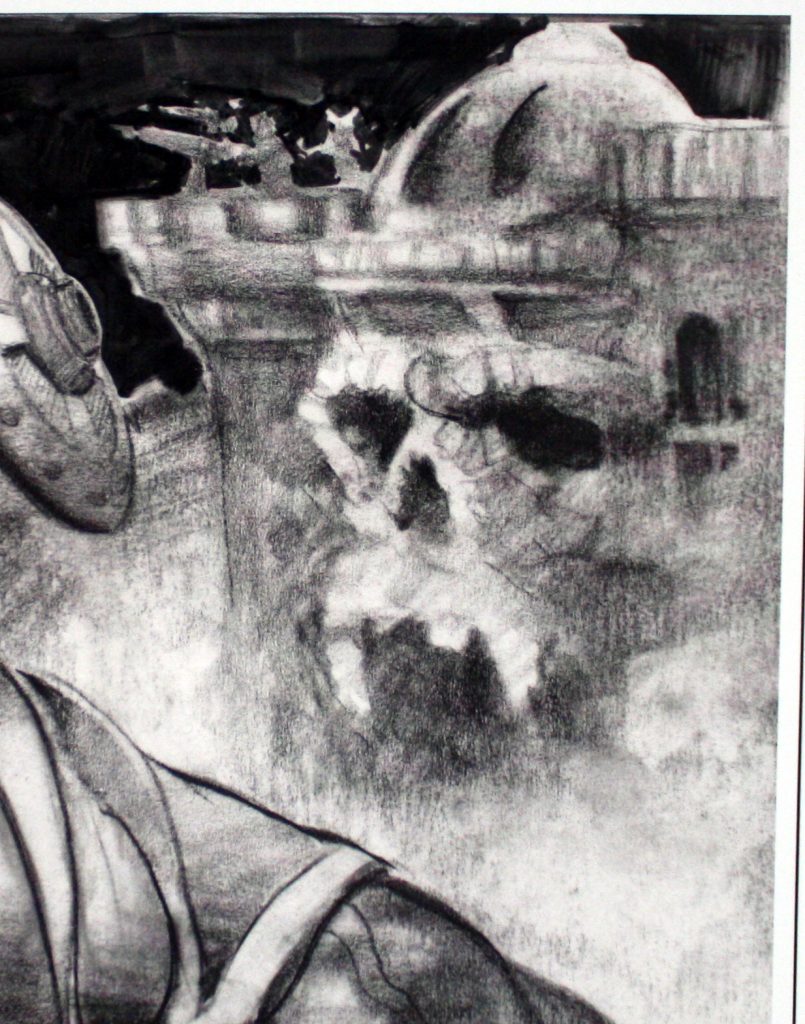
Image via the Rudy Obrero Box Art Collection (Super7/The Power and the Honor Foundation)
Castle Grayskull (1982)
The landscape around the castle seems to change with each depiction. In Battle Cat, it seems to be sitting in a valley. In the Castle Grayskull packaging illustration, the scenery is much more dynamic. The castle is surrounded by a deep chasm, seemingly filled with lava. We don’t get a good view of the ground directly in front of the castle, but it seems that the jaw bridge is the only thing making it accessible by land.
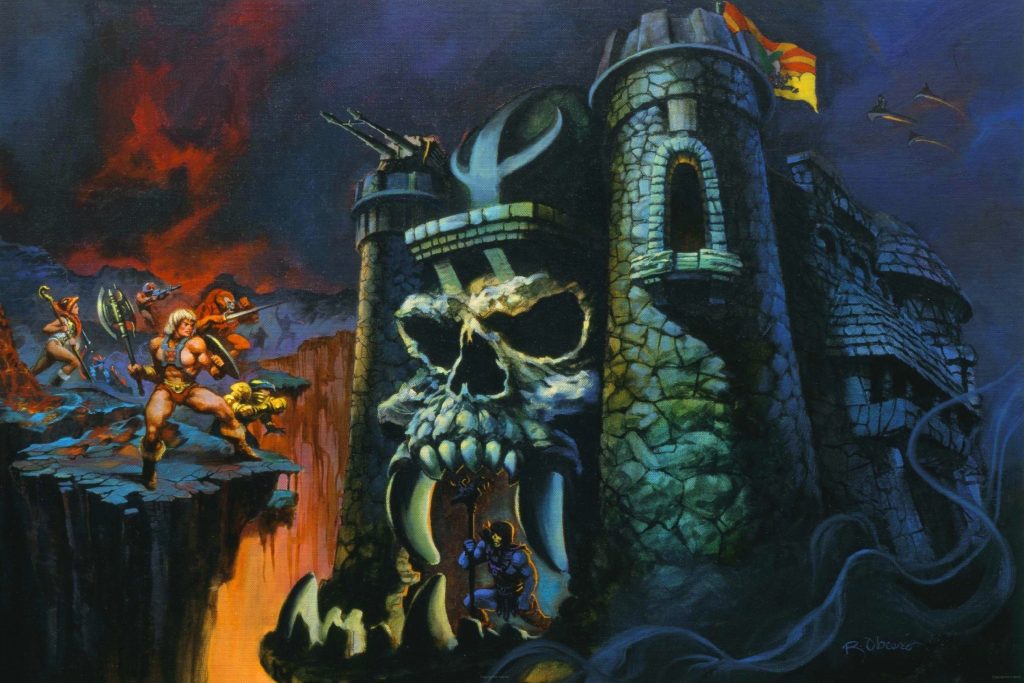
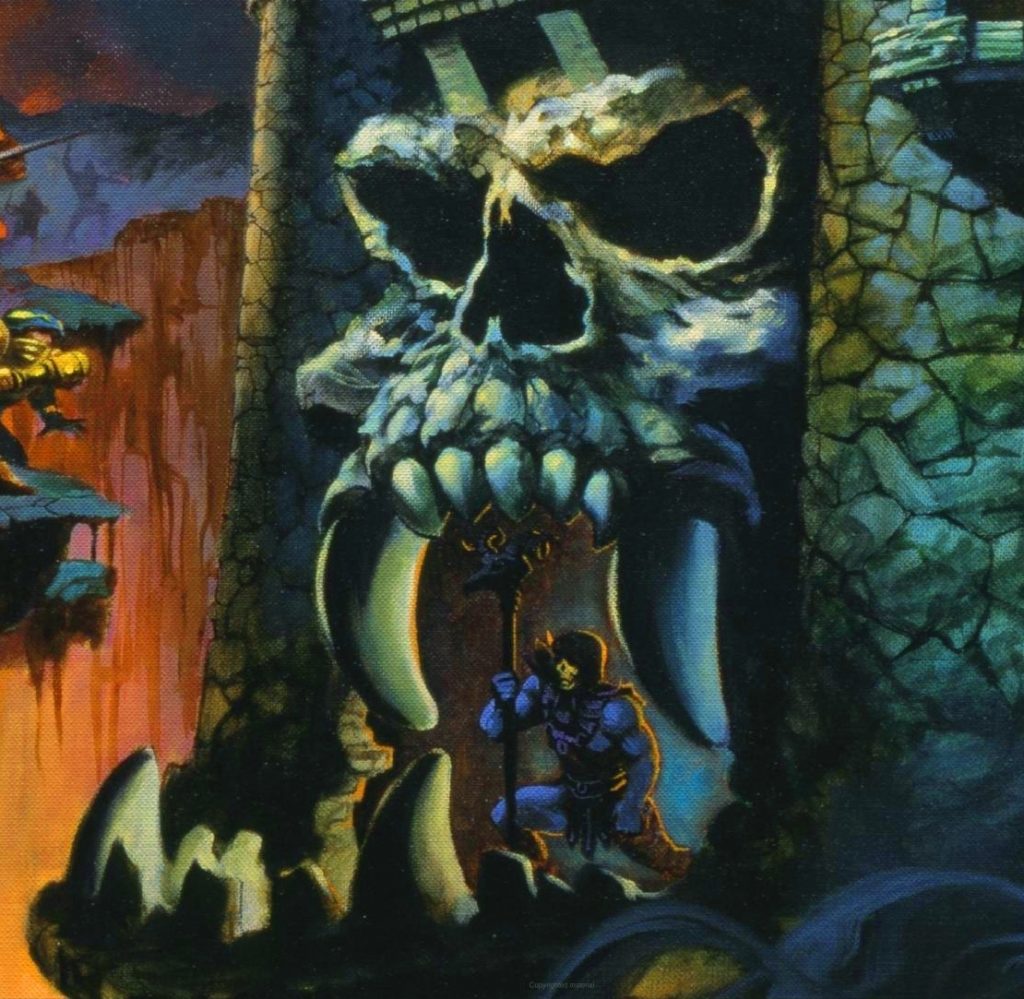


The castle itself is highly detailed, based on the playset but amped up with bigger teeth and a meaner looking face. It has the finalized laser blaster and flag designs. In my opinion this is probably the single most iconic piece of artwork ever done for the Masters of the Universe line.
Battle Ram (1982)
In Rudy Obrero’s Battle Ram illustration, the castle is is in the distant background. It has the general look of the version of Castle Grayskull that appeared in the Battle Cat illustration. In this instance, the castle is set some distance away from a deep chasm.
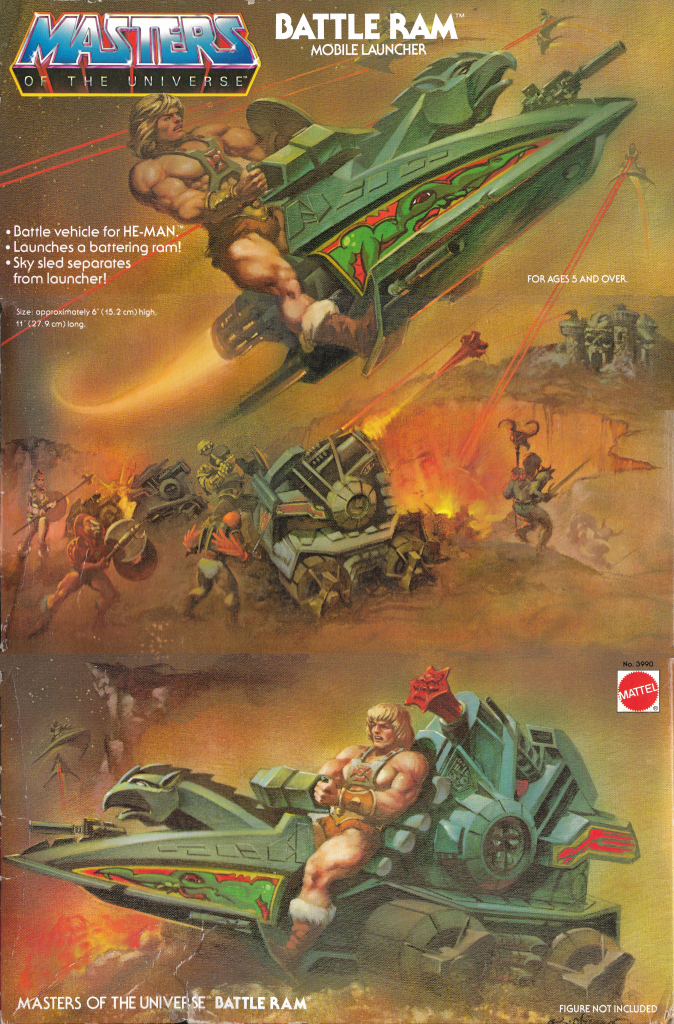

He-Man and Wind Raider (1982)
The castle is a bit more finely detailed in Rudy Obrero’s He-Man and Wind Raider illustration. It follows the general look and design of the Castle Grayskull packaging, but now the castle sits on a rocky, smoke-filled battlefield, with no hint of any trenches or chasms.
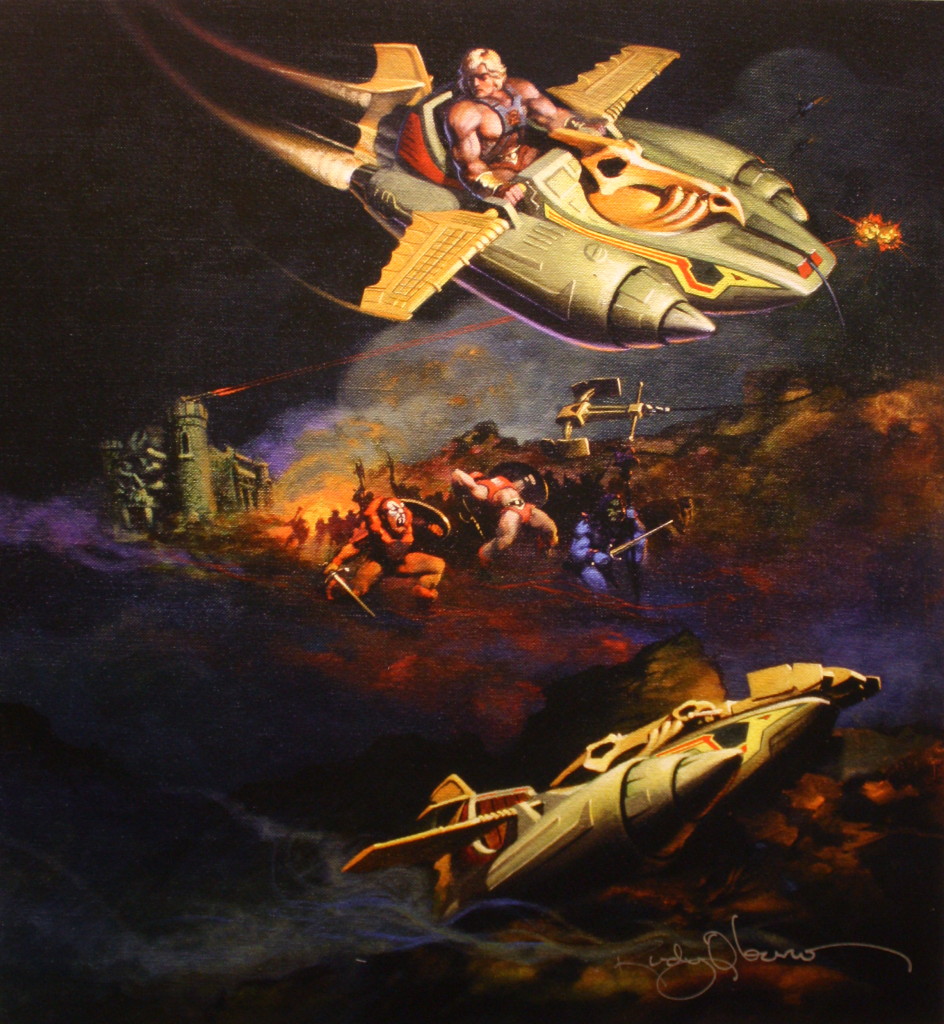

Wind Raider (1982)
Rudy Obrero’s Wind Raider illustration (below) is interesting for a few reasons. First of all, it again seems based on Rudy’s Castle Grayskull packaging illustration, complete with oversized jaw bridge. In this scene one tower has been destroyed by He-Man’s Wind Raider anchor (remember at this point the castle was no one’s home base).
Finally, the Castle this time sits on small, rocky island in the middle of a lake (or so it appears). That’s significant because that’s the setting that designer Mark Taylor originally had in mind for the castle:
“The visible Castle rises above a fetid lake/moat inhabited with assorted exotic and dangerous flora and fauna, the castle extends seven levels/floors into the bedrock of the lake. Each level distorts reality (i.e., time and space) more than the one above. For example: the levels below the weapons storage room (armory) start with all the weapons that exists within one century each way from the present (MOTU time), the floor below that within five centuries years each way and so on.
“The Pit of Souls is a dungeon containing undying monsters from the beginning and end of time, that also extends into the time and space continuum (probably a miniature black hole). The powers of the castle are linked to these evil captives. Skeletor and his minions would love them released but also fear their potential. One must be very careful when listening to their counsel because they are extremely clever and totally evil.
The elevator when properly programmed (secret code) drops into these descending levels, of course, with each level potential danger as well as power lurks… This is obviously not the Eternia envisioned by marketing at Mattel, it is my world of He-Man.”
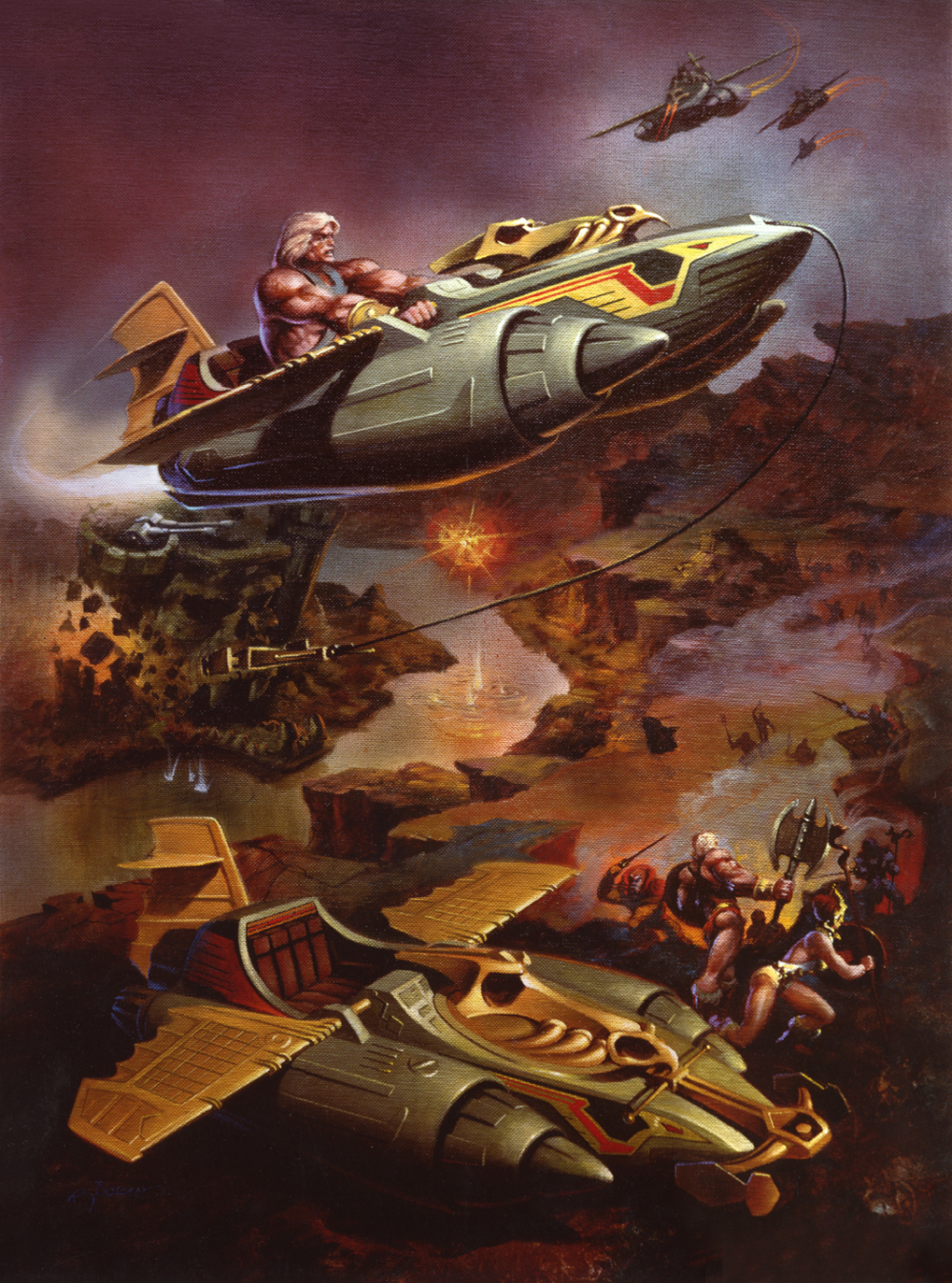
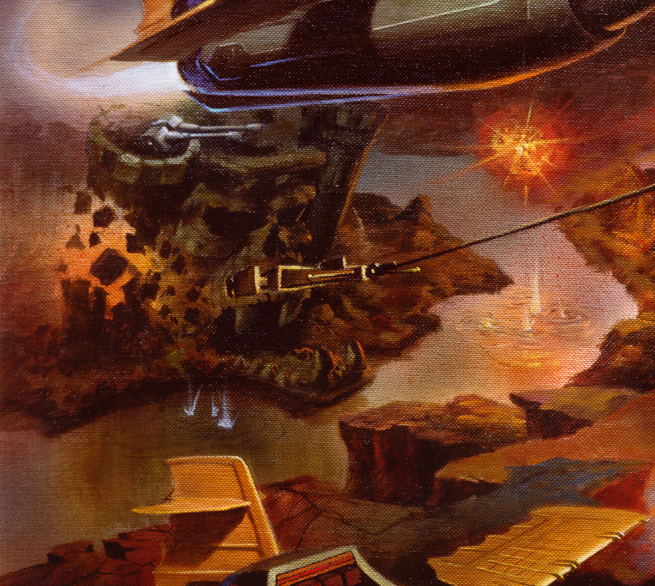
Attak Trak (1983)
For whatever reason, Rudy Obrero’s Attak Trak illustration is a mix of influences. In most respects it looks very much like the playset, but at the top of the helmet it features the prototype “pawn” piece.
Location-wise, this looks like another rocky battle field, like the one in He-Man and Wind Raider or in Battle Cat:

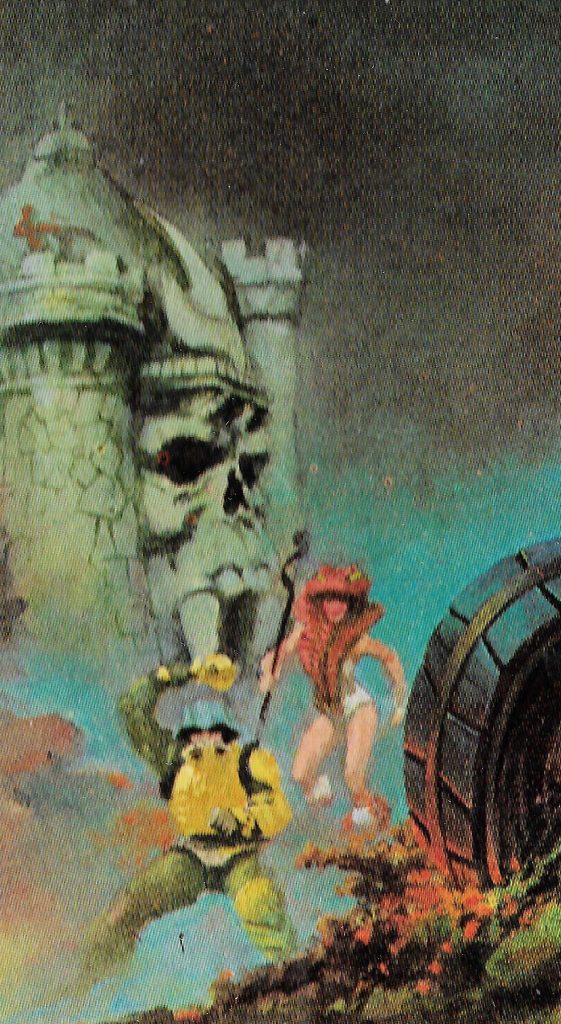
Zoar (1983)
Rudy Obrero’s Zoar illustration has Castle Grayskull on top of a rocky hill. Design wise, it’s a very close match to Rudy’s Castle Grayskull packaging illustration.
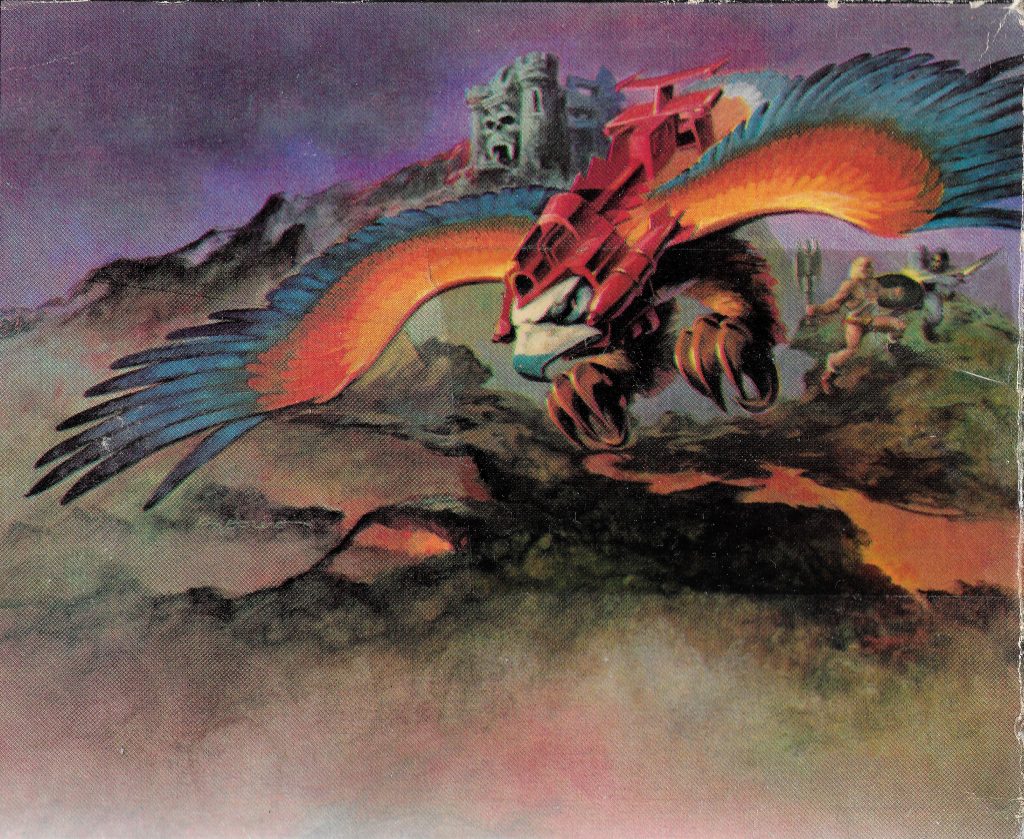
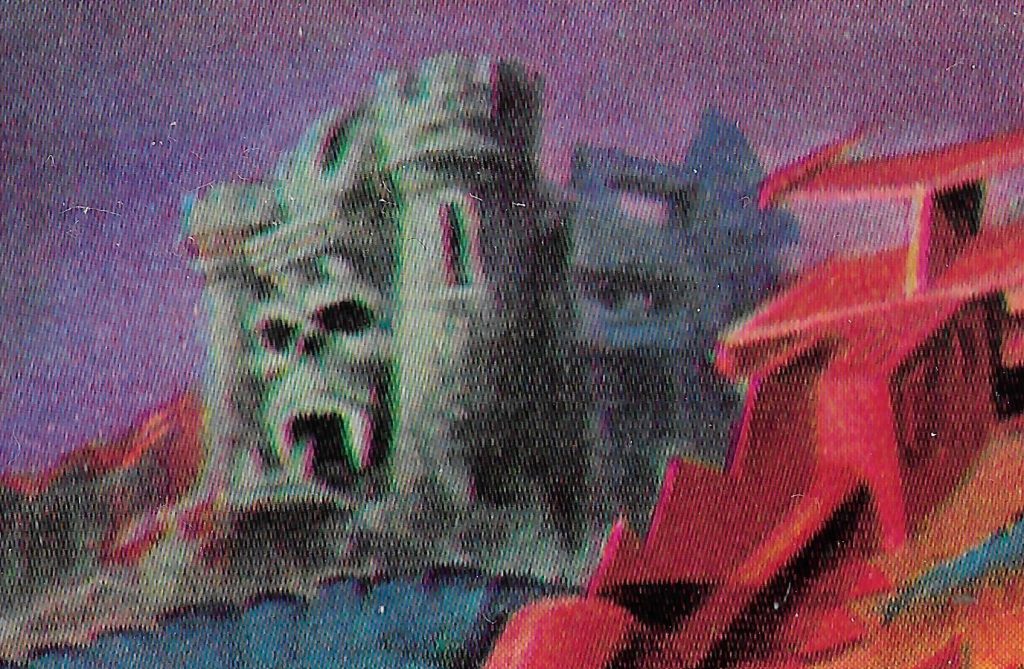
Skeletor and Panthor (1983)
This illustration by William Garland features a Castle Grayskull that very much resembles the way Rudy Obrero depicted it in Battle Cat. Garland, however, seems to prefer to set his battle scenes in the desert, with blowing clouds of dust everywhere.
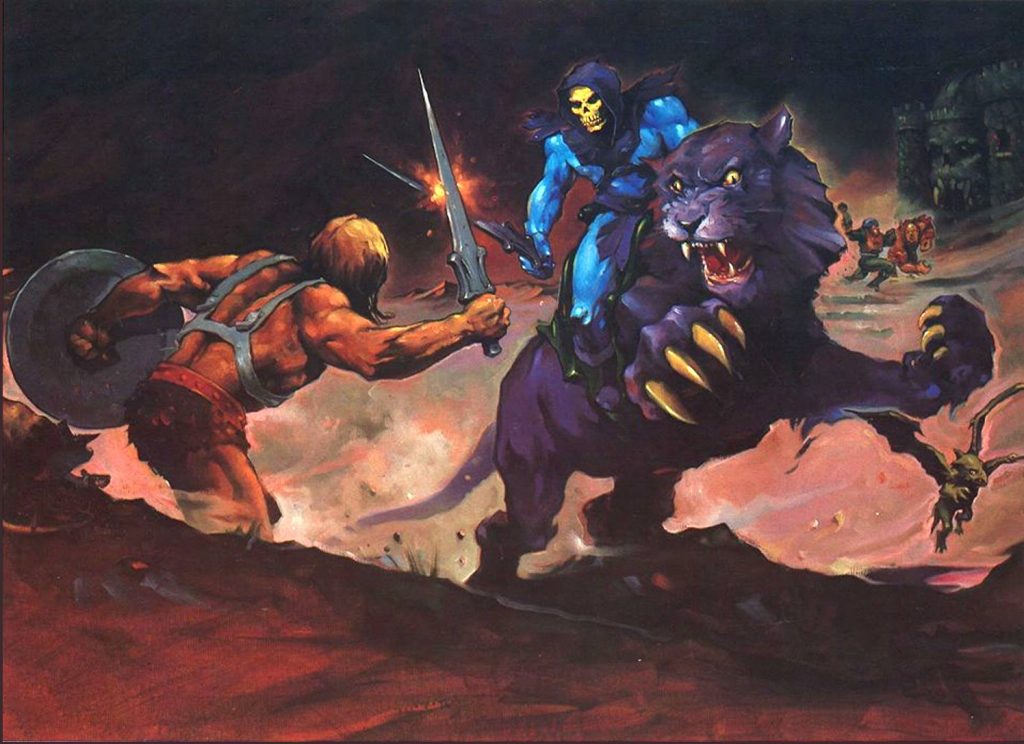

Point Dread & Talon Fighter (1983)
This William Garland illustration features a mirror image Castle Grayskull – the tallest tower with the window is on the wrong side. It also seems to have the prototype “pawn” piece on top, and feature’s Garland’s usual desert location.

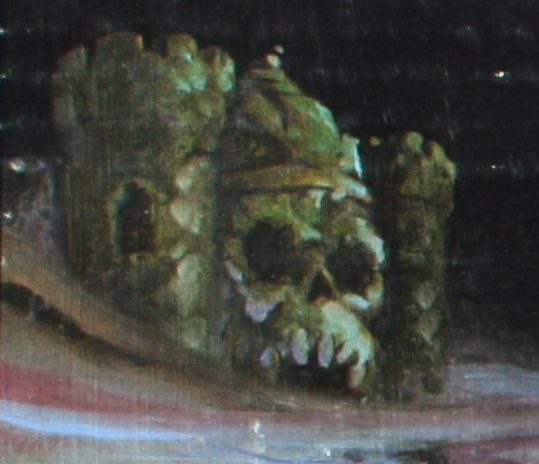
Panthor (1983)
Castle Grayskull is easy to miss on William Garland’s Panthor illustration. It’s off in the distance and it happens to face upward on the box. The design and location of the castle are more or less identical to Skeletor and Panthor.
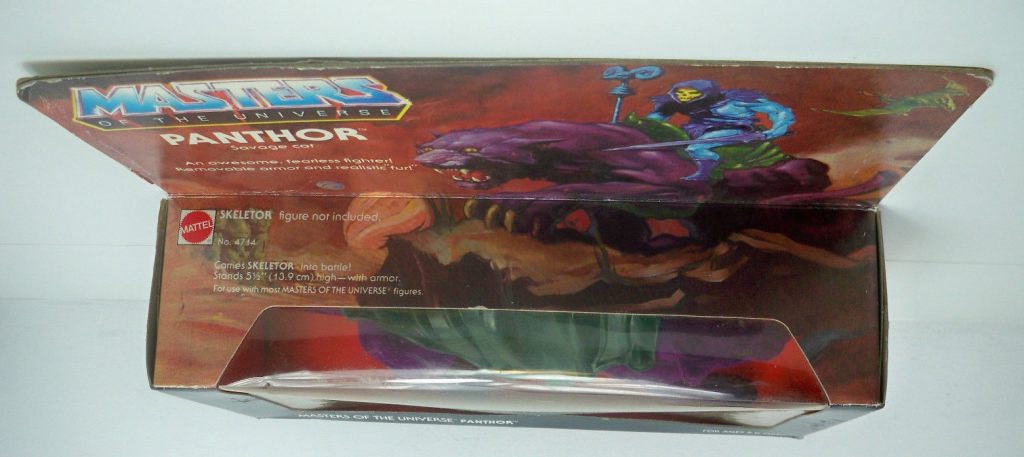

Battle Armor Skeletor and Panthor (1984)
William George didn’t illustrate Castle Grayskull all that frequently, but when he did, he tended to put it on top of a mountain, often with a winding path leading to it. His castle generally follows the look of the playset, albeit with longer teeth.
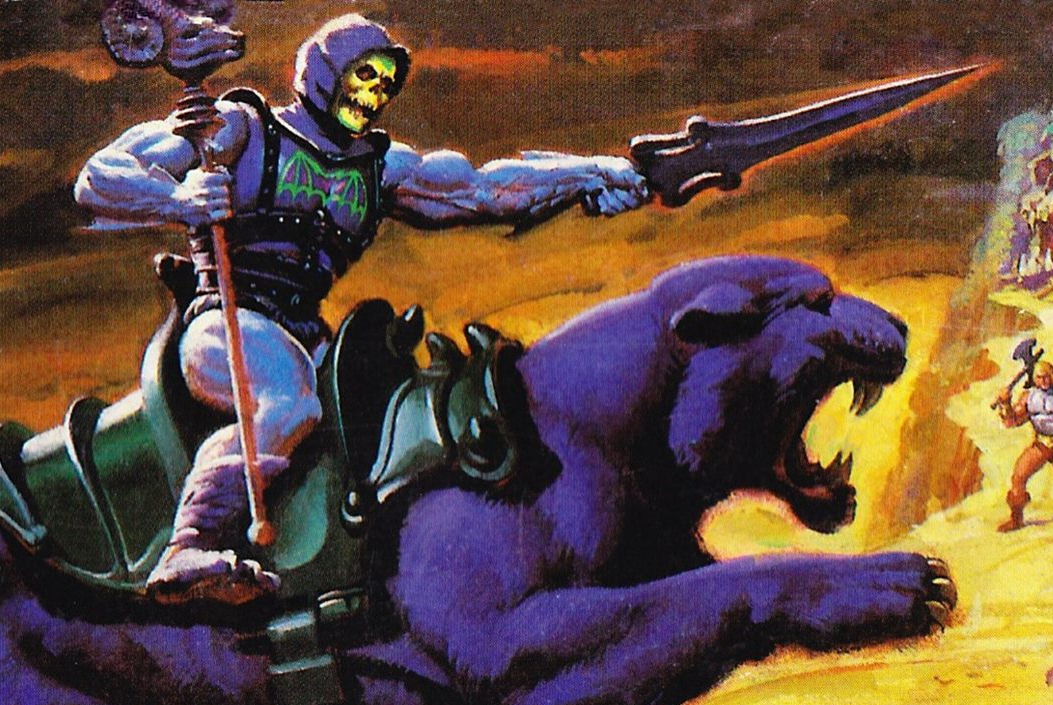
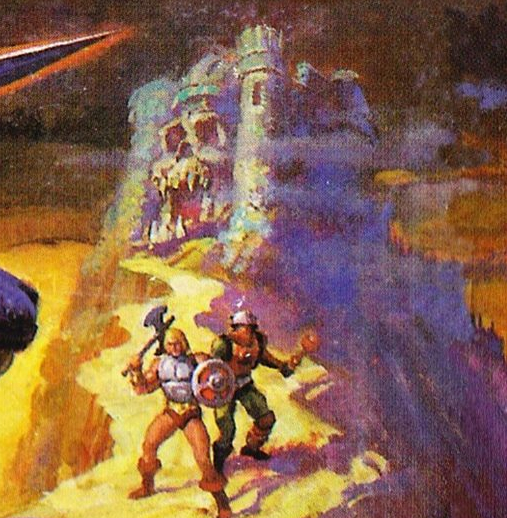
Eternia (1986)
William George included both Castle Grayskull and Snake Mountain in his Eternia box art illustration. Interestingly, this version of the castle seems more closely based on the prototype than the playset. The castle seems to be set on a small hill rather than a mountain, but the winding road leading to it is still there.
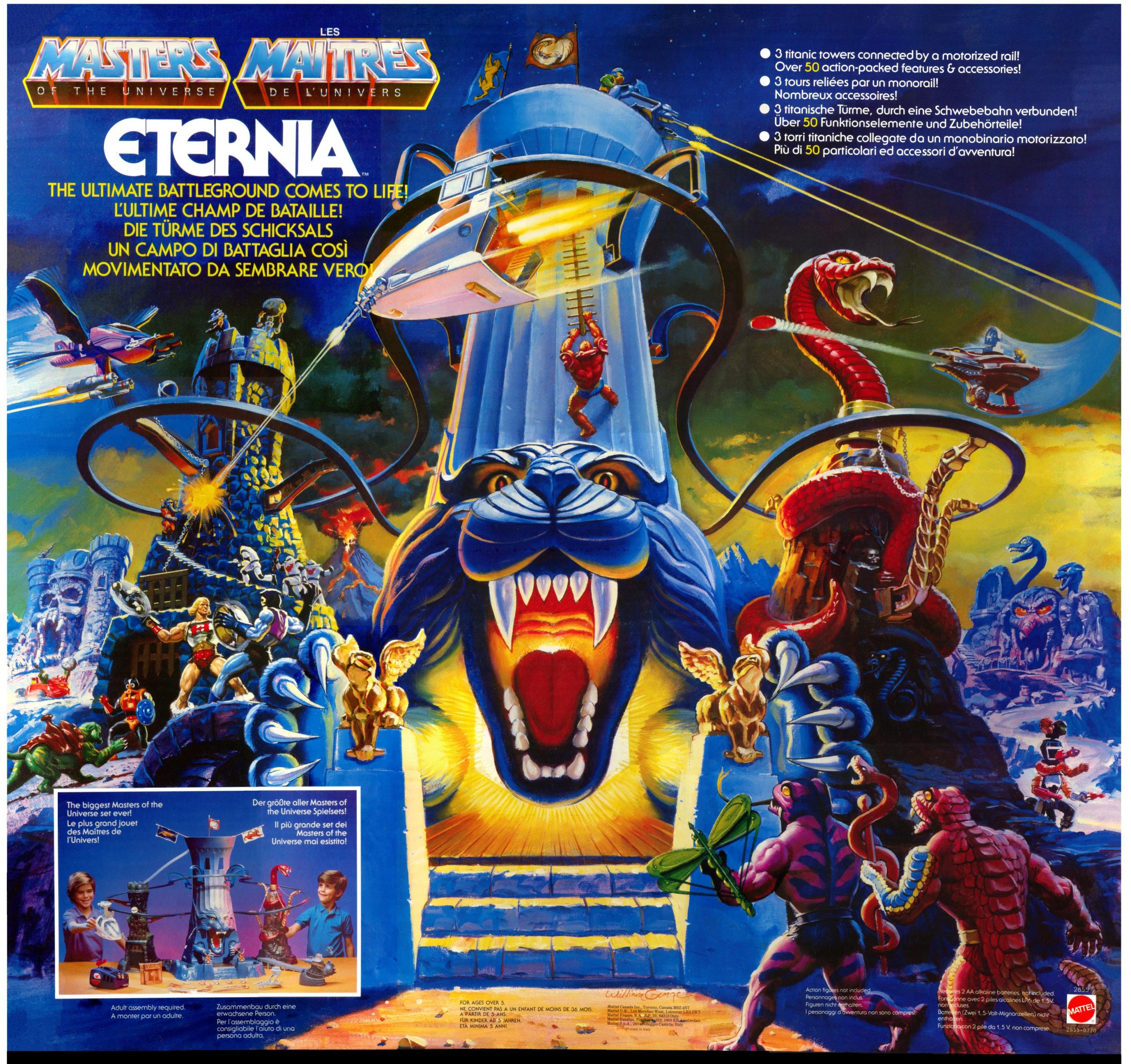
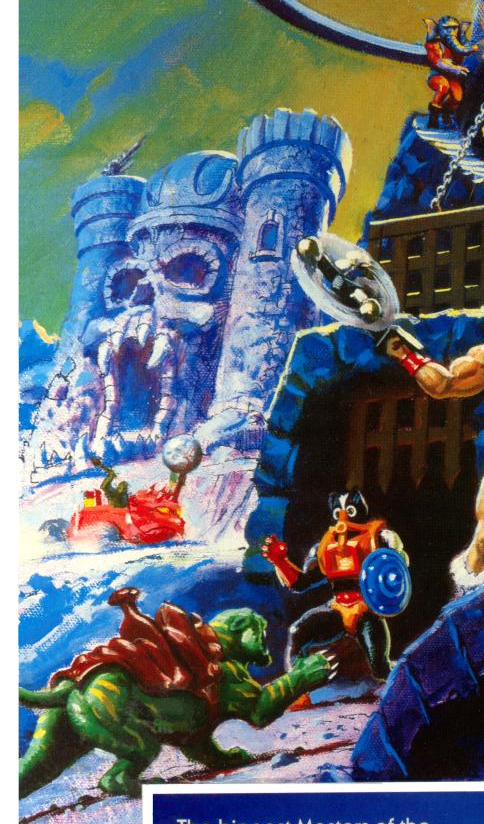
Flying Fists He-Man & Terror Claws Skeletor (1986)
William George again sets his Castle Grayskull up on a mountain, although there is no path leading up to it this time. The face on the castle is a little compressed looking in this interpretation, with an upper jaw that seems to hang far out over the entrance.
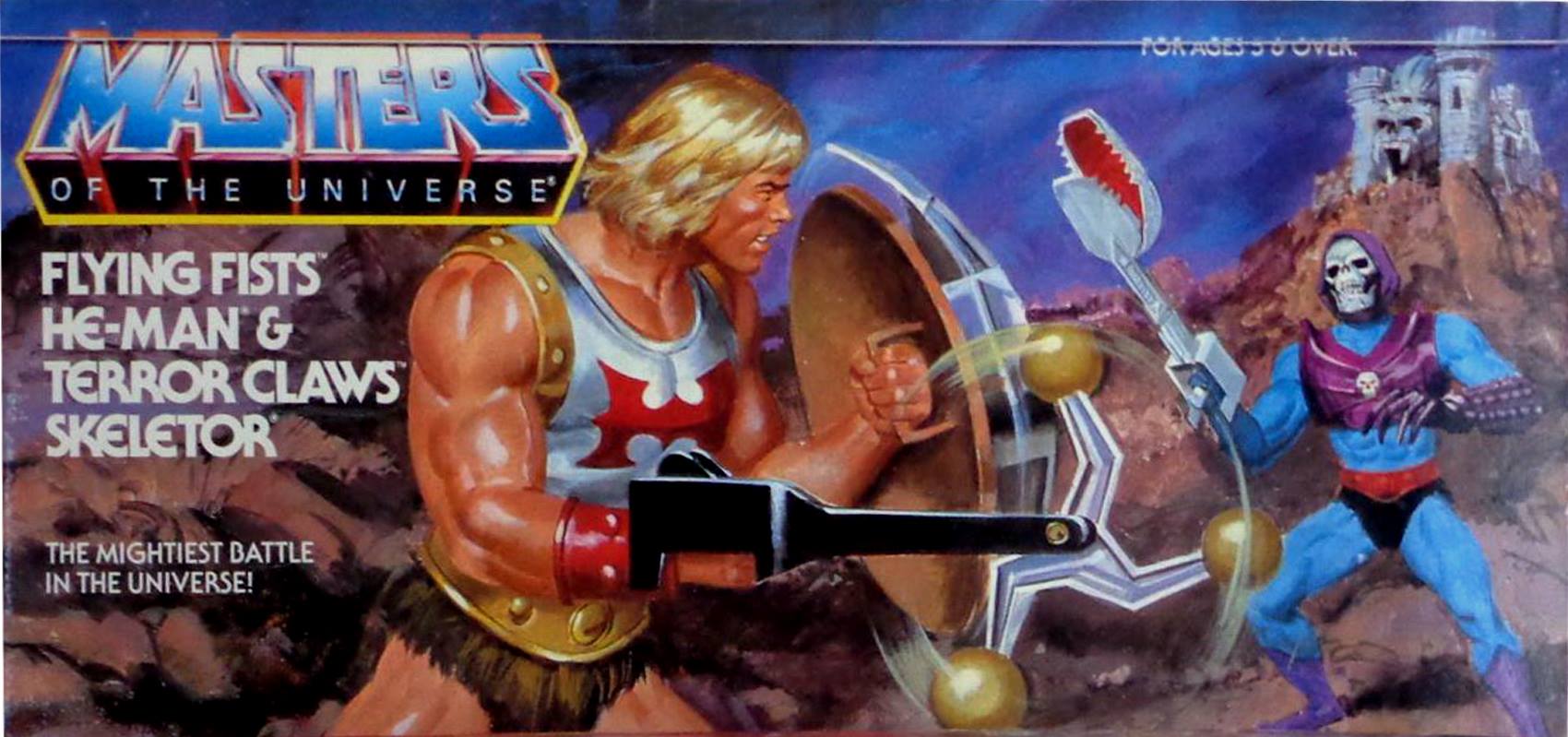
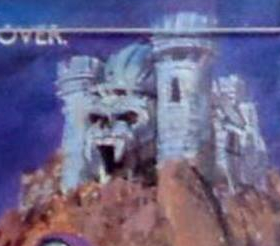
Now, Look at how great Castle Grayskull looks on it’s own boxart.. compare it with the joke in the cartoon.. boxart SOOO much better
“The Pit of Souls is a dungeon containing undying monsters from the beginning and end of time, that also extends into the time and space continuum (probably a miniature black hole). The powers of the castle are linked to these evil captives. Skeletor and his minions would love them released but also fear their potential. One must be very careful when listening to their counsel because they are extremely clever and totally evil.”
This sounds a lot like some of the stuff said about Snake Mountain in the 1987 Style Guide. I wonder if someone at Mattel picked up and repurposed Mark’s ideas.
That’s a really interesting connection! I hadn’t connected the two before.